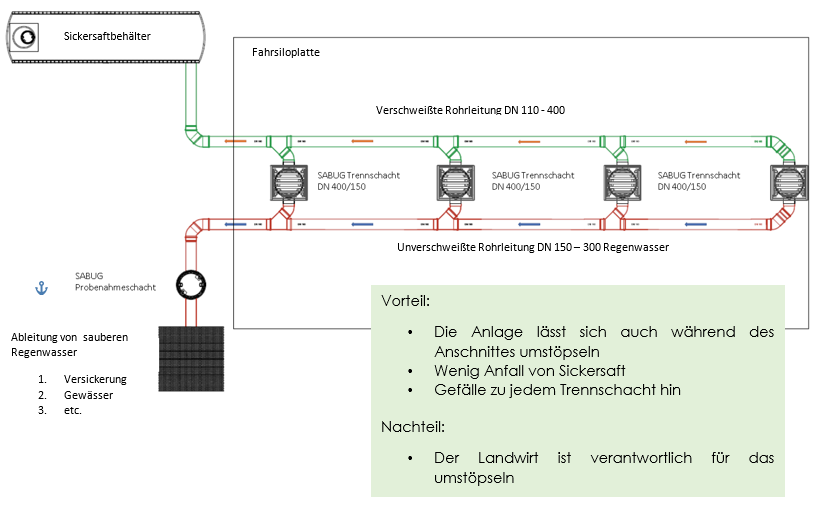Silo systems
JGS facilities house valuable feed or fertilizer, but at the same time they can pose an environmental hazard if not properly constructed or operated. When storing silage in a flat silo, the escaping fermentation juice is the cause of the special requirements placed on the structural system.
Defective JGS facilities, such as silo facilities, repeatedly lead to contamination of the groundwater or the receiving waters, streams and rivers located in the neighborhood. Fermentation juice can reach pH values between 4 and 5 due to acid formation during the fermentation process. The components used must therefore have an appropriate acid resistance. In addition, special attention must be paid to the tightness of the construction, as fermentation juice is classified as hazardous to water. According to the Water Resources Act (WHG) § 62, fermentation feed silos must be built and operated in such a way that the best possible protection of water bodies is achieved.
There is a wide range of designs and variants for the drainage of silage systems. All solutions have specific advantages and disadvantages.
In the design of these plants, of course, many different designs are possible.
The company SABUG will be happy to assist you with the design of your drainage system and make suggestions for execution that will support the work of the planning offices. The documentation of all plant components is, of course, part of the delivery.
Which version of wastewater discharge or water storage is used is ultimately determined by the operator. But in all cases, the responsible water authorities (lower water authority or the district office) must agree and issue a permit under water law. For this purpose, some documents such as site plans must be submitted. Please also note that not all designs shown here are approved by all lower water authorities and district offices. Please check with your local authority first. However, the binding planning of the plant can only be carried out by the operator himself or with the help of architects and/or engineering offices.
… Call us – We will be happy to help!






